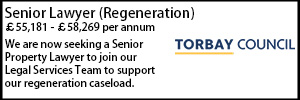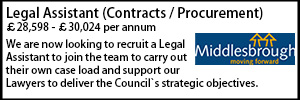What’s in a name? Changing street names
- Details
Richard Harwood QC looks at the thorny issues that arise when it comes to renaming streets.
One front in the culture wars has been debate about street names, particularly those which memorialise figures now considered in some quarters to be controversial. How is a street renamed? If someone wanted to change Kensington Palace Gardens, where the Russian Embassy is, to ‘Heroes of the Ukraine Street’, how to do it?
The legislation governing street re-naming is archaic, wildly inconsistent and there is great difficulty in discovering what provisions apply. The issue was considered in a Policy Exchange paper ‘Protecting Local Heritage: How to bring democracy to the renaming of streets’ by Zewditu Gebreyohanes in 2021. The government in Westminster has picked up these proposals and on 11 April 2022 published a Technical consultation on street naming. Ministers propose to update one of the mechanisms, a street vote, and make it the universal approach to changing street names.
It may be helpful to explain the current regimes for street re-naming and their limitations before looking at the need for reform.
The existing powers
Outside Greater London the available street-renaming powers are the Public Health Acts Amendment Act 1907, section 21 (the 1907 Act) and the Public Health Act 1925, section 18 (the 1925 Act). Which provisions apply depends initially on which were applicable prior to 1974 (Local Government Act 1972, Schedule 14, para 23, 24). The Public Health Act 1925 had allowed urban authorities (but not rural district councils) to adopt its provisions, but did not require that to be done: see section 3. Subsequently a local authority may resolve to apply one provision or another, having given prior public notice: Local Government Act 1972, Schedule 14, para 25. Only one power is available to a local authority at any time. There is no national register of which power applies and local authorities may have to search their records with care to determine what is applicable.
The Towns Improvement Clauses Act 1847, s 64 authorises councils which had adopted its provisions to name streets (the Act contains standard clauses for local or private Acts). However section 64 cannot be used to change the previously adopted name of a street: Collins v Hornsey Urban Council [1901] 2 KB 180 at 184 per Lord Alverstone CJ. In that case the Lord Chief Justice, Lord Alverstone, observed that the Court ‘can easily see that in the case of altering the name of an old street great inconvenience and difficulty may be caused if an alteration of name is forced upon people’.
The London Building Acts (Amendment) Act 1939, s 6(1) authorise the borough council to name ‘any street way place row of houses or block of buildings whether or not in substitution of for a name already given or assigned’. These powers originally applied to the London County Council area and were extended to the whole of Greater London by the London Government Act 1963, s 43(1). The street-naming provisions of 1907 and 1925 Acts are disapplied in Greater London (Local Government Act 1972, Schedule 14, para 26).
None of the provisions set out statutory criteria for street naming or identify any matters that must be taken into account. The Secretary of State has not had any policy on street naming. GeoPlace LLP is a public sector limited liability partnership between the Local Government Association (LGA) and Ordnance Survey. It produces the ‘GeoPlace Data Entry Conventions and Best Practice for Addresses’ which is presently in version 3.4 (September 2016). This is concerned principally with consistent data recording for mapping purposes (the working party which drew it up appears to be technical rather than political). It proposes that local authorities have policies for naming new streets, including the use of names of historic, deceased or living people (see para 4.2 with examples in Appendix F). However other than discouraging the use of the names of living persons (the Jimmy Savile effect), the guidance provides no assistance on how this should be done.
The 1907 Act power may only be exercise with the consent of two-thirds of the non-domestic ratepayers and council tax payers in the street. The 1925 Act and the London Buildings Acts Amendment Act 1939 (s 6) are subject to no such limitation. Consultation in advance of a naming decision (whether for a new street or a change of name) is required in the London legislation, but not under the 1925 Act.
A right to be consulted only arises if the legislation provides for it; a promise or practice of the decision maker gives rise to a legitimate expectation that it would be carried out; or fairness requires consultation to take place.
Appeals under the 1925 Act
There is a right of appeal under the 1925 Act to the magistrates’ court: 1925 Act, s 8. An appeal is to be made by way of complaint: Magistrates’ Court Rules 1981, rule 34. Simply writing to the Court is at least formally defective: this may explain why only a small number of objections made to the Court appear to have been accepted as appeals in the Sir John Hawkins, Plymouth case. These are formal court proceedings, using the civil jurisdiction of the magistrates’ court, which are old and poorly explained, so are not easy for the public to use.
The ability of the Court to differ from the council in an appeal is in practice very limited. In Basildon Borough Council v James [2015] EWHC 3365 (Admin), [2016] P.T.S.R. 377 the High Court held that an appeal under the 1925 Act can only be upheld if the Court was satisfied that the Council’s decision was wrong (at para 43 per Mr Justice Garnham). It is not for the Court to decide simply whether it would have altered the name. Nor conversely is the Court limited to approaching the council decision on the basis of a public law error: as is done in judicial review. The High Court was consciously following the caselaw on appeals to the magistrates in alcohol licensing cases where the appellant ‘should have to persuade the magistrates' court that the sub-committee should not have exercised its discretion in the way that it did rather than that the magistrates' court should be required to exercise a discretion afresh on the hearing of the appeal’: R(Hope & Glory Public House Ltd) v City of Westminster Magistrates' Court [2011] EWCA Civ 31, [2011] P.T.S.R. 868. The Court should though ‘pay great attention to the opinion of the council as the duly constituted and elected local authority and should not lightly reverse its conclusion’ (at para 43 per Garnham J).
It has to be remembered that licensing is subject to statutory licensing objectives, licensing policy which is adopted locally and derived from government policy, is regularly dealt with and subject to many comparable local decisions. Magistrates’ courts can and do overturn local authority licensing decisions.
However, as the High Court pointed out in Basildon there ‘are no statutory objectives, no statutory guidance and no policy to which the council was required to have regard or to which the court can have resort’ (at para 36 per Garnham J). This is the problem for anyone seeking to appeal a renaming decision. The Court has no criteria for deciding whether the Council were wrong. Renaming is really an administrative decision, which may have political elements (particularly if the existing name is being considered unacceptable) and practical consequences. The Court, whether lay magistrates or a professional district judge, are likely to be deferential to that administrative/political decision. In the absence of any statutory or policy tests which the council and the court should be applying or considering, it is very difficult for a judge to say that the Council’s view is wrong, even if the judge would have made a different decision for rational reasons themselves. In practice an appeal is more likely to succeed where there has effectively been a public law error, such as the council not following its own procedure or leaving out an obviously relevant issue, and so the court might then make up its own mind. I note that the Basildon case refers to the magistrates’ court rejecting renaming proposals elsewhere in the town ‘largely on technical grounds’ (see para 5) but it is not apparent on what basis this was done.
The alteration of a street-name under the 1907 Act appears to be subject to a right of appeal to the Crown Court under section 7 of that Act by any person aggrieved, provided that ‘alter’ is included within a ‘determination’ or ‘requirement’ of the local authority. If such an appeal right exists (and there is no available caselaw on the point), it will be approached in the same way as in Basildon. There appears to be no right of appeal against a decision under the London legislation, so a complainant’s only remedy would be to apply to the High Court for judicial review.
Conclusions
The provisions on street-naming are archaic and inconsistent. There is even a degree of uncertainty as which powers apply in any particular local authority outside Greater London since it relies on a resolution having been passed at some point in the last 95 years and not rescinded.
Public involvement in those provisions is highly inconsistent: ranging from the requirement for a super-majority of ratepayers on the street in the 1907 Act, statutory consultation in London and only a right of appeal in the 1925 Act.
A magistrates’ court or Crown Court is not a suitable forum for resolving these issues. Where there is an appeal the Court would have to find that the Council’s decision was wrong. In the absence of any statutory criteria or national policy it would be very unlikely to do so, short of any public law error by the authority which could be subject to judicial review in any event. Therefore the right of appeal to a court, where it exists, is of very limited use.
In general there is a recognition in the legislation that re-naming a street is a step which may have significant effects, not least on the residents and occupiers of the street. The 1907 Act strikes a suitable balance, requiring the consent of two-thirds of all the non-domestic ratepayers and council taxpayers on the street. At present that is the active agreement of that proportion – not simply a super-majority of those who express an opinion.
This approach is being taken by the government consultation:
“The government is considering the case for modernising these multiple and dated Acts by replacing them with a single clear requirement for a residents’ vote on any changes to street names based on the principles set out in 1907 legislation.”
The government propose that consent be sought from those on the street in question. The consultation asks whether this should be based on the electoral role and whether and how businesses should be involved.
If a super majority is required then it may be that an appeal mechanism is not required. Any individual objection on the merits would be against the background of 2/3rds actual support. Public law errors can be dealt with by judicial review. The reasonableness of a super-majority approach was supported in the related context of whether to erect dual-language street name plates in Northern Ireland. The High Court considered that a council policy to require the positive support of two-thirds of electors on the electoral register for the street before installing a second language name plate was lawful: In the matter of an application by Eileen Reid for Judicial Review [2014] NIQB 129.
There will be some streets which do not have addresses occupied by ratepayers or council taxpayers. That appears to have been the case with Sir John Hawkins Square in Plymouth. Beyond public squares there may also be sidestreets or alleys where adjacent occupiers border it but have a different address. It is still desirable to require immediate local support. One means of doing that would be for the 2/3rds majority to be of electors (or the business ratepayers and council tax payers) who either have the street as their address or whose properties border it. The consultation seeks views on how to address this situation.
One possibility is a super-majority from nearby streets if there are no occupiers or only a very small number of occupiers on the street. That is an option although the area would need to be defined (presumably by distance) and carefully mapped. There may be value in assessing how common this issue of unoccupied streets might be and so how far it needs to be addressed.
The alternative course to a super-majority would be introducing an appeal mechanism to a government inspector. An inspector is more likely to grapple with the merits of the proposed change than the magistrates’ court is. However inspectors do in practice need criteria in legislation or policy to apply. They still have a difficulty in making a decision in a policy vacuum. There would be a need for policy from the Secretary of State if that process was to be followed. That policy would need to anticipate most of the issues likely to arise, including controversies about existing street names and the disruption caused by changing names. The supermajority avoids most of these problems as it requires a substantial majority of those who are most directly affected by a re-naming. They will tend to prefer the status quo unless they consider there is a pressing need which outweighs the inconvenience. Appeal mechanisms would therefore seem to be unnecessary on the super-majority approach.
In legislative terms the neatest course is to repeal the renaming sections of the 1907, 1925 and 1939 Acts and to introduce a new section. On the proposed approaches there would be one regime rather than three. Whilst it would be the 1907 regime in an amended form, it can be made a wholly new section rather than amending the 1907 Act. The provisions of the 1925 and 1939 Act would be repealed in any event.
The re-naming provisions ought to sit with a provision for new street naming and for street numbering. A single procedure ought to be used for new streets (at present there are provisions in the 1847, 1925 and 1939 Acts). That is less contentious because it does not involve getting rid of names or disrupting existing occupants.
Street-naming legislation is not a matter reserved to the UK government so any changes in Wales would be made by the Welsh Assembly.
Whilst a policy framework for street renaming would not be essential if the supermajority was required in all cases, there may be value in indicating how potentially contentious issues should be addressed in the meantime and when authorities are considering names. That could emphasise the role of street names as part of local history and matters current at the time the streets were laid out, and if names are contentious, the ‘retain and explain’ approach. Ministers could also suggest the role of new street names in reflecting 21st Century Britain.
The consultation closes on 22nd May 2022.
Richard Harwood QC OBE is a barrister at 39 Essex Chambers.
Street renaming will be amongst the contested heritage discussed by Catherine Dobson, David Sawtell and Richard in a forthcoming book for lawbriefpublishing.
Sponsored articles
Walker Morris supports Tower Hamlets Council in first known Remediation Contribution Order application issued by local authority
Unlocking legal talent
Lawyer (Planning and Regulatory)
Contracts Lawyer
Legal Director - Government and Public Sector
Locums
Poll








































